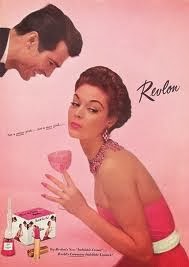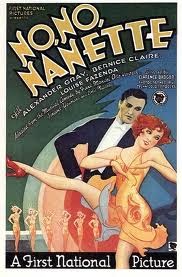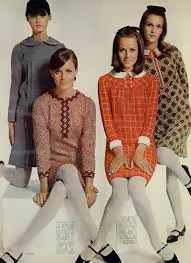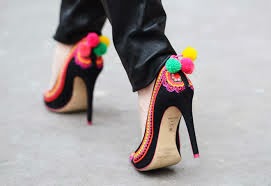 |
| August 1965— my first issue |
WHAT MAISIE KNEW
This Maisie didn't know much. I was ill-prepared for work as a graphic designer. The school I attended (for four years!) didn't waste time on practical skills such as spec'ing type or preparing mechanicals. I was lucky because at Glamour we were never tasked with such jobs. Somewhere— somehow— our fragmentary layouts came back a real magazine. Magic! Not knowing the rudiments of my profession haunted me for years. I was a concert pianist who couldn't read a lick of music or a fashion designer who couldn't sew. But such skills today are as a pencil is to the computer age.
MODUS OPERANDI
There were story conferences, show-and-tell by fashion editors and meetings with photographers. At this point in my career I was not part of that. My job began when the film arrived. Photographers shot 35 mm color slides, Kodachrome or Fujifilm. There were boxes and boxes of slides— 6 to 8 for each outfit in the story, more than a dozen boxes for a cover shoot. The slides might first be sent to the photographer, who was allowed to mark choices, but the whole kit and kaboodle had to be delivered to us— including every bad shot or underexposed frame. The only photographer who got to cherry-pick his offerings was Richard Avedon, working for Vogue. He sent
one print, already cropped and retouched.
If the messenger services were slow, Mary Anne would be dispatched to pick up the film. Once Ali McGraw (before she was
the Ali McGraw) was working as Melvin Sokolsky's assistant and brought up his film herself. Soon she was modeling for Glamour and— well— the rest is history. She was, by the way, incredibly charming and universally adored. One time Mrs. Denhof sent me to Edita Sherman's studio in Carnegie Hall. If you saw "Bill Cunningham New York" you met the flamboyant Edita in her '90s. A former actress and sometimes portrait photographer, she really made a living renting her prime-location studio to visiting photgraphers. Conde Nast kept her very busy.
 |
Ali McGraw in Glamour,
Cheryl Tiegs on left |
My job (and sometimes it was a day-long job) was to sort, organize and load the slides into black plastic "carousels" that fit in the slide projector permanently set up in Mrs. Denhof's office. She would project each and every one, pulling out her choices (not always matching the photographer's), which would be loaded into another carousel. At this point the editor(s) who had been on the shoot would be invited in for a run-through, along with Mrs. Johnson, the editor-in-chief. If it was a particularly important shoot, the whole fashion and art departments would crowd in. Much oo-ing and ah-ing insued. The photographer was never present. I imagine him waiting nervously by the phone to hear the verdict. I never recall Mrs. Denhof chewing anyone out. It was always, "Divine, my dear". She picked great photographers and determined she could always find something to work with.
Editorial photographers were loyal to the magazines that hired them. If you shot for Glamour, you weren't "big" enough for Vogue. Mademoiselle, also a Conde Nast publication, was the Yale to our Harvard; you didn't play for both. Heaven forbid (as time went on) if you shot for Glamour's rival, Cosmopolitan. Editorial jobs were probably the most creative but the least lucrative. However, editorial exposure led to commercial assignments. Though never credited in advertisements, photographers would be better paid.
Mrs. Denhof was partial to the Europeans and gave many their first jobs in New York, including Patrick Demarchelier, Frank Horvat, David Bailey and Patrice Casanova. "Regulars" at the time included the Americans Bill Connors, Sante Forlano and Frances McLaughlin Gill. The photographers would usually stop by the art department after a meeting (probably to catch a glimpse of their layouts). They could be incredibly generous at Christmas. I remember one year I was given a Gucci wallet by one, and I was
nobody!
After the slides came... the stats! Mrs. Denhof would select half a dozen pictures for each shot needed. The photostat department made a negative for each, then blew those up at predetermined percentages to a quarter, half or full page. You had to leave room for the "bleed", the area needed where paper would trim from the printed image as it was bound into a magazine. An eighth of an inch was considered minimal. Some shots were composed right to the edge of the frame. The cardboard mount made the tiniest difference, and sometimes that was peeled away to allow for the bleed.
In doing research I discovered that Conde Nast pioneered bleed printing at their plant, the Arbor Press, in Greenwich, Connecticut. By the time I worked there printing was done somewhere in Kentucky or West Virginia, and the water tower with the big GLAMOUR painted on it was no longer visible from the Merritt Parkway.
We also worked with black and white film, of course— 35mm and 2 1/4. Photographers would send all the contact sheets as per and could mark their choices with grease pencil. Working with a magnifying loop, Mrs. Denhof chose her own picks, which were then cut from the sheets with a stencil Exacto knife, making sure to transfer the roll number to the back and leaving the frame number on the side.
The loop we used was not a jeweler's loop— the round magnifying glass that gripped the wearer's eyeball. Ours were clearly marked on the box as "linen testers", thread counters for the textile industry and used to count threads per inch. They sat flat on the surface you were examining and folded down to a little square. Mine now sits in the kitchen "junk drawer" where it's a handy aide in removing splinters.
Working in the art department did carry an air of danger. Aside from rubber cement, we used rubber cement thinner, a highly flammable solvent. We bought it in gallon tins and stored it under the desks. Fortunately no one smoked. A sharp Exacto blade cut the best. It was dangerous to have them lying around and easy to slip using a new one. Once I stabbed my pinky with a croquil pen point (tiny and razor sharp) dipped in black ink. You can see my "self-inflicted tattoo" to this day.
When the stats came back they were trimmed to a hairline of the edge so the bleed could be determined. The stats then were then sorted, stacked and paper clipped
in just the right place and enclosed in a folder (really just a folded sheet of layout-sized paper) which identified the story. This could— and sometimes did— take days and was my job. I was very good at it.
At this point 80% of the magazine was printed in color— certainly all the major fashion stories— but we designers worked in black and white. The stats were black and white as was any type or illustrations. It was always a surprise when the real thing revealed itself in color.
Work was divided among us with George getting the majority of "well" pages. FYI the editorial well is the "meat" in the middle of a magazine— no ads. This is precious property as ads are what pays the bills. Even today, when every ad dollar counts, the editorial well has managed to remain intact. Thank goodness. There were also features not related to fashion or beauty in every issue. They could be serious (health or careers) or what was happening in popular culture. They were not "10 Ways to Fake an Orgasm" or whatever such nonsense goes in today.
In years to come I worked on features and the well, of course, but this was then. Shirley and I designed the "turns". I'm only guessing "turn" means it's a piece you basically look at and turn the page. These were the little bits that framed all the ads front and back— one or two columns in size. The turns were regulars such as "What Goes on at Glamour" (behind the scenes bits where I had previously gleaned so much information about the magazine), the travel pages or "Glamouraisle", a mail order section. There was the "Editor's Shoe Choice" and the occasional nurse's uniforms or maternity clothes.
Then there was "The Cover Look". This was my first exposure to All May Not Be All It Appears To Be. "The Cover Look" was credited to whichever advertiser was waiting his turn. Whatever products the makeup artist actually used on the shoot, approximations as manufactured by Revlon or Maybelline or Cover Girl were found and identified as the ones chosen. A bit of a sham, really. I hope I haven't crossed the line in Revealing Too Much.
 |
| By Richard Giglio |
 |
| By Sheila Camera |
Richard Giglio and Sheila Camera were two favorite illustrators. You had to live in New York City to work for us. This was the day before even FAXes. You needed to be able to run up to the office at a moment's notice to get your assignment and/or deliver your sketches. Richard and Sheila both knew exactly the look we were going for. Their illustrations practically designed themselves on the page. Mrs. Denhof was an early supporter of the great Antonio Lopez. You didn't direct him so much as let him go.
By the way, all the work photographers and illustrators did for us was the property of Conde Nast. While we kept the originals that had actually been used in an issue, everything else got purged— mounds and piles of slides, contact sheets, drawings and rejected layouts. We'd save the paper clips. I can't tell you how many Antonio drawings I trashed. Cleaning out was my job too, and I was very good at it.
 |
| By Antonio |


















































